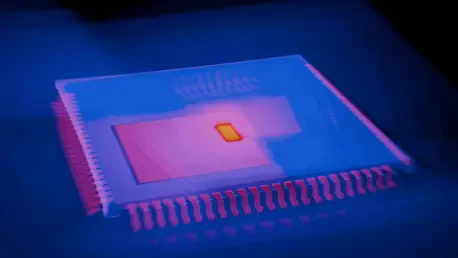In a noteworthy policy shift, the Trump administration has repealed the AI chip export restrictions put forth by the previous Biden administration, igniting a debate over innovation and international relations. These regulations, known as the AI Diffusion rules, aimed to restrict the export of American GPUs and AI accelerators to nearly every country except the United States and a few key allies. The primary intent behind the policy was to compel other nations to adopt robust security measures to prevent the re-export or illicit transfer of AI technology to China.
Despite the initial endorsement of such measures, the U.S. Commerce Department decided to withdraw the regulations in response to concerns that they could stifle American innovation. They were also perceived as potentially imposing unnecessary regulatory burdens on businesses and straining U.S. diplomatic ties by placing many nations in a subordinate position regarding access to advanced technology.
Revoking Biden-Era AI Rules
Concerns Over Innovation and Diplomacy
The revocation of the Biden-era rules comes amid rising concerns about maintaining a balance between protecting national security and fostering an environment conducive to technological innovation. Some American tech companies opposed the original restrictions, arguing that limiting access to AI infrastructure could drive allied nations to procure similar technologies from competitors, including China.
In response, the Trump administration expressed its intention to devise a unique approach to AI export policies. Despite an emphasis on safeguarding national security interests, the administration has not yet outlined specific strategies or detailed plans. This creates a sense of ambiguity around future regulatory landscapes, leaving both tech professionals and industry leaders eager for clarification while grappling with the immediate implications for international tech partnerships.
Strategic Shift Toward Targeted Measures
The recent decisions signal a move toward more nuanced policy measures, shifting the focus from broad export restrictions to targeted security-enhanced oversight. This shift was further underscored by guidance from the U.S. Commerce Department, aimed at drawing attention to potential risks associated with infrastructure-as-a-service (IaaS) providers. Specifically, there is concern that these companies might overlook Chinese efforts to develop AI models utilizing rented cloud resources.
Historically, U.S. trade policies put constraints on Chinese companies importing advanced American chips directly. However, such policies have not necessarily stopped these entities from using foreign data centers to gain similar capabilities. By emphasizing the requirement for U.S. chipmakers to obtain government approval before selling accelerators to foreign IaaS providers, the administration aims to curb technology transfers that could aid military AI development in hostile nations like China.
Broader Policy Implications
Enhancing Transaction Oversight
Beyond mere product export constraints, the Trump administration’s revised policy reflects an effort to address technology access issues through enhanced transaction oversight. This includes an emphasis on existing foreign cloud data centers that might possess GPU resources crucial for AI training purposes. Companies found utilizing Huawei’s AI accelerators are faced with explicit warnings, as these components likely incorporate unauthorized American technology. By strategically aiming to block unauthorized technology transfers indirectly, the policy reveals a nuanced approach that seeks to protect American competitive edges while still allowing certain flexibilities.
Balancing Competition and Alliances
This strategic evolution in U.S. policy underlines a broader narrative—a delicate balancing act between maintaining competitive advantages in the tech domain and nurturing strong international partnerships. The subtle shift from extensive restrictions toward focused, targeted measures reveals an intent to not only safeguard American interests but also to preserve critical alliances within the international tech community. It portrays an understanding that innovation thrives best in integrated networks, and alliances are key to addressing broader security concerns without hampering progress.
Perspectives and Future Considerations
Addressing the Complex Tech Landscape
Navigating the complex landscape of AI technology and geopolitics requires adaptable strategies that align national security with the realities of global partnerships. The dialogue surrounding this evolution tends to underscore the ongoing tension between protecting American tech advances and maintaining beneficial diplomatic relationships. How the Trump administration plans to navigate these challenges remains a crucial question as new policies take shape, potentially setting precedents for future governance in the tech sector.
Charting a Path Forward
The Trump administration’s updated policy goes beyond just restrictions on product exports, seeking to tackle technology access issues through heightened scrutiny of transactions. There’s a specific focus on foreign cloud data centers that may hold GPU resources vital for AI development. Companies involved with Huawei’s AI accelerators receive direct warnings, as these components are likely embedded with unauthorized American technology. This strategic move is not just about blocking direct exports; it’s about obstructing unauthorized tech transfers indirectly. This nuanced approach is designed to safeguard American competitive advantages while still allowing certain flexibility where appropriate. By concentrating on these critical areas, the policy intends to prevent unauthorized use of U.S. technology abroad, all while aiming to maintain a balance that supports international collaborations and economic interactions. The policy illustrates a multifaceted strategy to uphold American tech integrity and leadership amidst global AI advancements.









